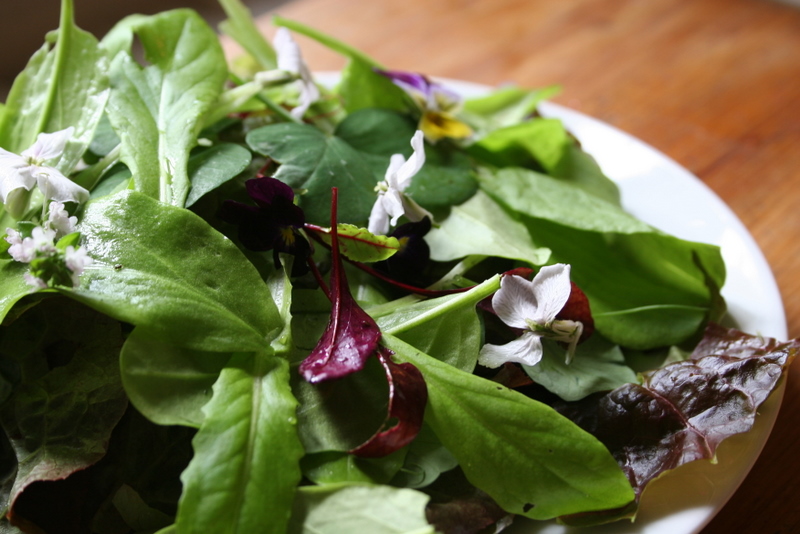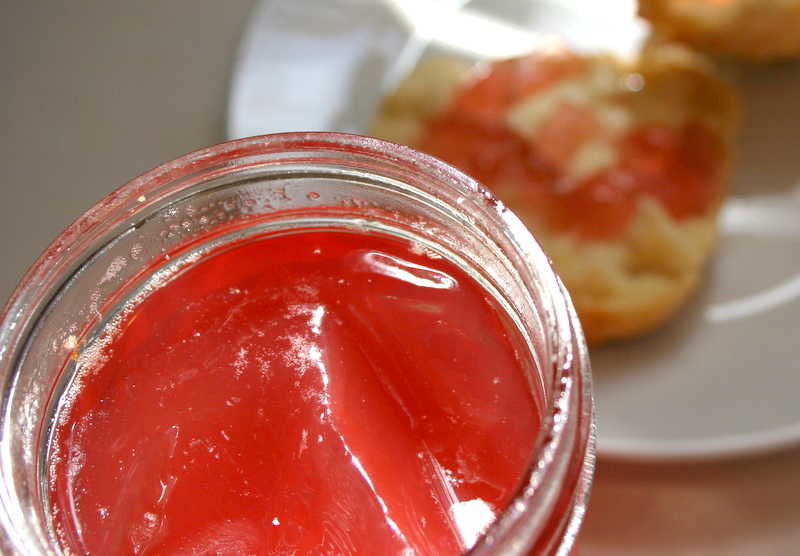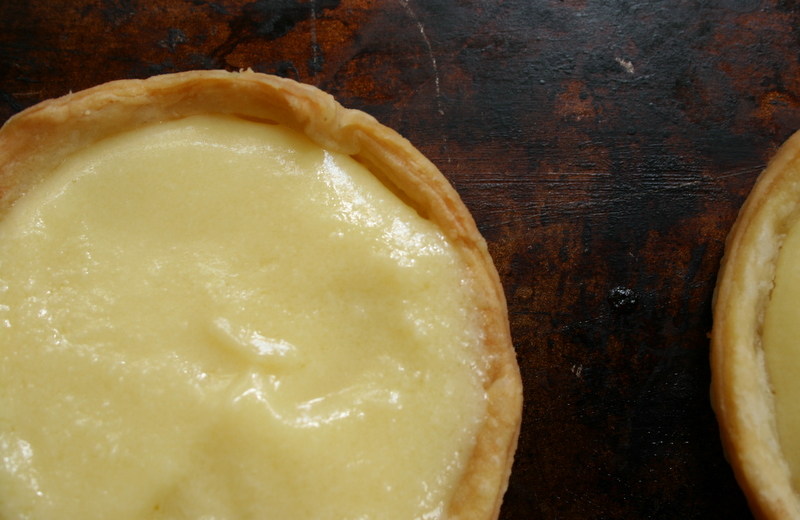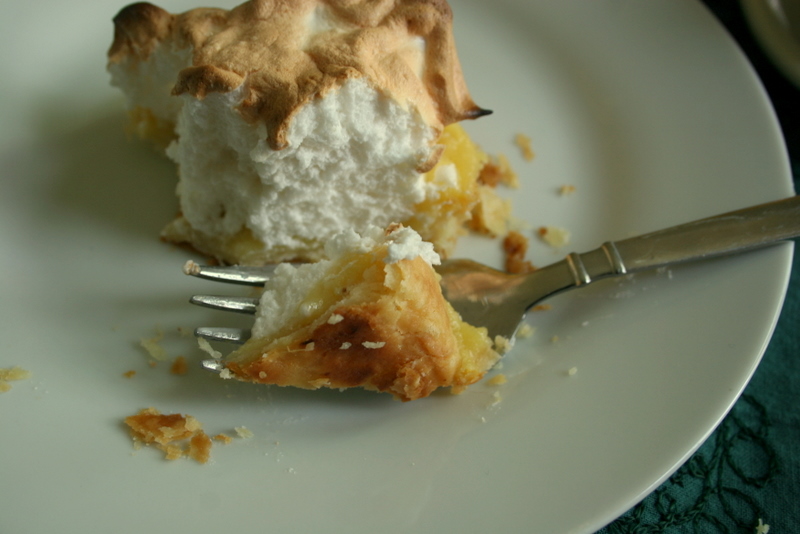We have entered the season of plenty. So much to write about, but all of my time is being taken up with hikes and gardening. Here are a few bits and peices of information to chew on. In this post, you'll find info on dandelions, lambsquarters, roses, fireweed, and crowberry.
Livin' the dream: the one-year challenge
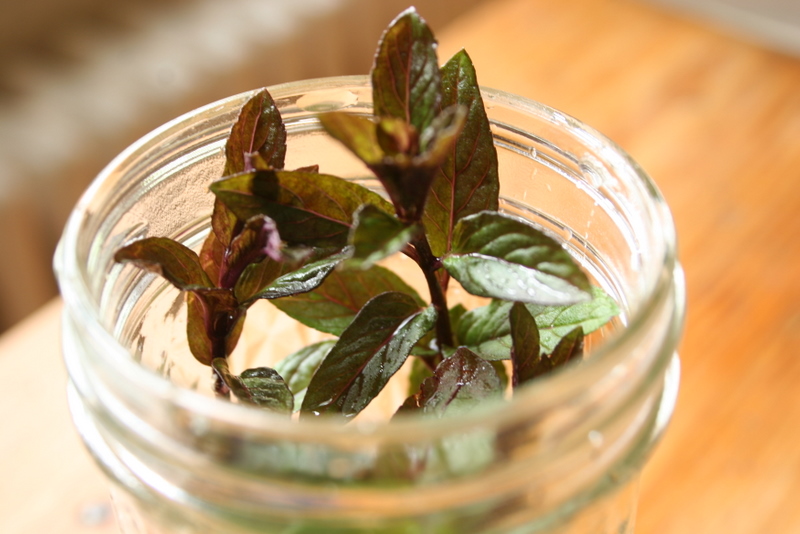 I am delighted to say that we have officially come to that point in the summer when I eat something I have grown or gathered every single day. Every day! Sometimes it's part of a main dish, like my grilled rapini pizza from a few weeks back, or like the turnip top quiche I made from my very own home-grown greens last week, or like the tasty pasta I whipped up with my first ever garden garlic scapes. Sometimes it's just a sprinkle of basil and parsley on my pasta, or some rosemary and lemon thyme stuffed inside a chicken. And almost every day it's a salad, or at least the bulk of a salad (sometimes I augment my pickings with local lettuce or microgreens).
I am delighted to say that we have officially come to that point in the summer when I eat something I have grown or gathered every single day. Every day! Sometimes it's part of a main dish, like my grilled rapini pizza from a few weeks back, or like the turnip top quiche I made from my very own home-grown greens last week, or like the tasty pasta I whipped up with my first ever garden garlic scapes. Sometimes it's just a sprinkle of basil and parsley on my pasta, or some rosemary and lemon thyme stuffed inside a chicken. And almost every day it's a salad, or at least the bulk of a salad (sometimes I augment my pickings with local lettuce or microgreens).
Between my vegetables, backyard fruit, edible flowers, herbs, and the berries I'll soon be foraging, I'm sitting pretty. The question is, how long can I keep it up?
Well, let me fill you in on my plan. For the next year, I plan to consume at least one thing I have grown or foraged every single day. For the next few months, it should be a piece of cake (and, indeed, it could actually be a piece of cake... blueberry cake, zucchini cake, green tomato spice cake...). Once winter sets in, things will get a little more difficult, but with some forethought I'm pretty sure I can do it.
I'm not talking about making every meal entirely, or even mostly, from ingredients I've grown myself. I would love to be able to do that, but it's not going to happen this year. No, just a little something every day to remind myself of my ultimate goal of greater self-sufficiency, and to lighten my load on the planet, even just a bit. Here's how I'm going to do it:
- Put up as many preserves as are reasonable. I emphasize "reasonable" because there are still some chutneys from 2007 in my pantry. My family eats lots of jam, jelly, and fruit butter, and not so much chutney.
- Freeze lots of berries, grated zucchini, ground-up green tomatoes, whole ripe tomatoes, chopped basil (if I manage to grow enough to warrant freezing, damnable slugs!), and other veggies and fruit for use over the winter.
- Dry lots of rose hips, mint, lemon balm, and other edibles for tea, and lots of fennel, dill, oregano, and other herbs for cooking. Dry my Filius Blue peppers and use them to heat up winter dishes.
- Plant my winter garden and see how long I can keep my kale, leeks, lamb's lettuce, purple sprouting broccoli, and spinach growing under cover (I'm reading How to Grow Winter Vegetables by Charles Dowding right now, and it's super inspiring).
- Bring my potted herbs indoors and tend to them lovingly through the dark months.
- Fire up the Aerogarden and the grow lights, grow greens indoors, and eat lots of sprouts.
- If I can find a guide, collect and dehydrate chanterelle mushrooms to use later in stocks and stews.
Summer Teas
What weed? Knotweed!
When Costa wrote his defense of Japanese knotweed last month, I was very excited. So excited that I almost immediately ran to the lot at the top of my street with a paring knife and filled a paper bag with bright, tender knotweed shoots. I turned them into a tasty soup and was most impressed with myself. The next week, I tried serving plain steamed knotweed spears as a side dish. This time, I am afraid to say, I was not so pleased. Steamed, the knotweed took on this pallid olive-green tone, and deflated into a mass of floppy, stringy mush before my very eyes. Not to my taste, not one bit.
The knotweed has been redeemed, though. Earlier this week I made knotweed jelly, following this recipe, which you may have already seen: it's one of the first things that comes up when you search "Japanese knotweed recipes." I followed the recipe exactly, except that I decided to half it, just in case it turned out to be horrible. It didn't, though. It's lovely!
It's surprisingly mellow in flavour, and almost floral. I ate it on scones, but I think it would be nice swirled into a cheesecake or used to fill thumbprint cookies. You could also keep it on hand to use as a glaze for sweet baked goods and fruit-filled tarts: just melt a little in a pot over low heat and spoon or brush it over the surface of your baked, cooled tasties. (If you haven't done any canning before, read the instructions on the Bernardin site: they're excellent.)
Since I only used part of the knotweed juice from the jelly recipe, I had enough to spare to make some knotweed curd. It was one of those "why not?" situations. I love lemon curd, and I love rhubarb curd, so why not try knotweed curd? I adapted Nigella Lawson's lime curd recipe to come up with this:
Japanese knotweed curd
(makes about 350 mL)
- 5 tablespoons unsalted butter
- 1/3 cup sugar
- 1/2 cup knotweed juice
- 1 tablespoon lemon juice
- 2 extra-large eggs, plus one egg yolk, beaten
In a medium saucepan, melt butter over low heat. Add all other ingredients and whisk to combine. Continue to heat, stirring constantly, until mixture thickens up. If you want to check if it's thick enough, lift out your spoon and run your finger through it: if it looks thick enough, it is! Pour the curd through a sieve into a clean jar. Cover and cool. Will keep in the fridge for a week or so.
The yellow of the happy egg yolks (from the Goulds, via Halliday's) overtook the pink of the knotweed juice, and the flavour is quite subtle, but it is tasty and custardy. Of course, having a jar of curd in the house, and a leftover egg white, I had practically no choice but to make a few knotweed meringue tartlets. I was inspired by the orange curd tart on Rock Recipes (an awesome local recipe site), but I didn't want an entire tart in my house, as I would have eaten the whole thing (I cannot be trusted in the presence of meringue).
I wish I could give you a recipe, but, really, I was winging it. My usual pie crust recipe is here, and for the tarts I made about 1/3 of a batch. I pre-baked my three wee tart crusts in upside-down wide-mouth canning rings, because I don't have any mini tart rings. If you've never pre-baked a pie crust, there's a good explanation of the best way to do it here. If you make mini-tarts, you'll have to adjust the time: I had mine in the oven for about 7 minutes.
Once that was done, I filled the pastry shells with curd, like so:
Then I whipped the egg white with 1/8 teaspoon of cream of tartar until soft peaks began to form, then I added a little less than 1/4 cup of sugar and whipped a bit more. I overwhipped a little, actually, and had to smoosh the meringue on to the tarts with my fingers because it was too thick to spread. Ooops! I popped the tarts back into the oven at 400F for a couple minutes to brown, then let them cool.
Come mid-afternoon, I rewarded myself for my ingenuity with a knotweed meringue tart and a cappuccino. It was marvelous! Not tangy like a lemon tart, but the marshmallowy meringue provided a nice textural contrast to the dense, eggy curd. Really, you should give it a try! If my vague instructions are too loosey-goosey for you (and I don't blame you if they are), just make the curd and use a favourite lemon meringue pie recipe (or the Rock Recipes one above), filling the shell with knotweed curd instead of the usual filling.
Let me tell you, I'm definitely looking at those encroaching fields of knotweed in a new light. I'll be making another batch of knotweed jelly this week, and maybe some extra for holiday presents. I can almost guarantee nobody's going to say, "Oh, man, not another jar of homemade Japanese knotweed jelly!"








